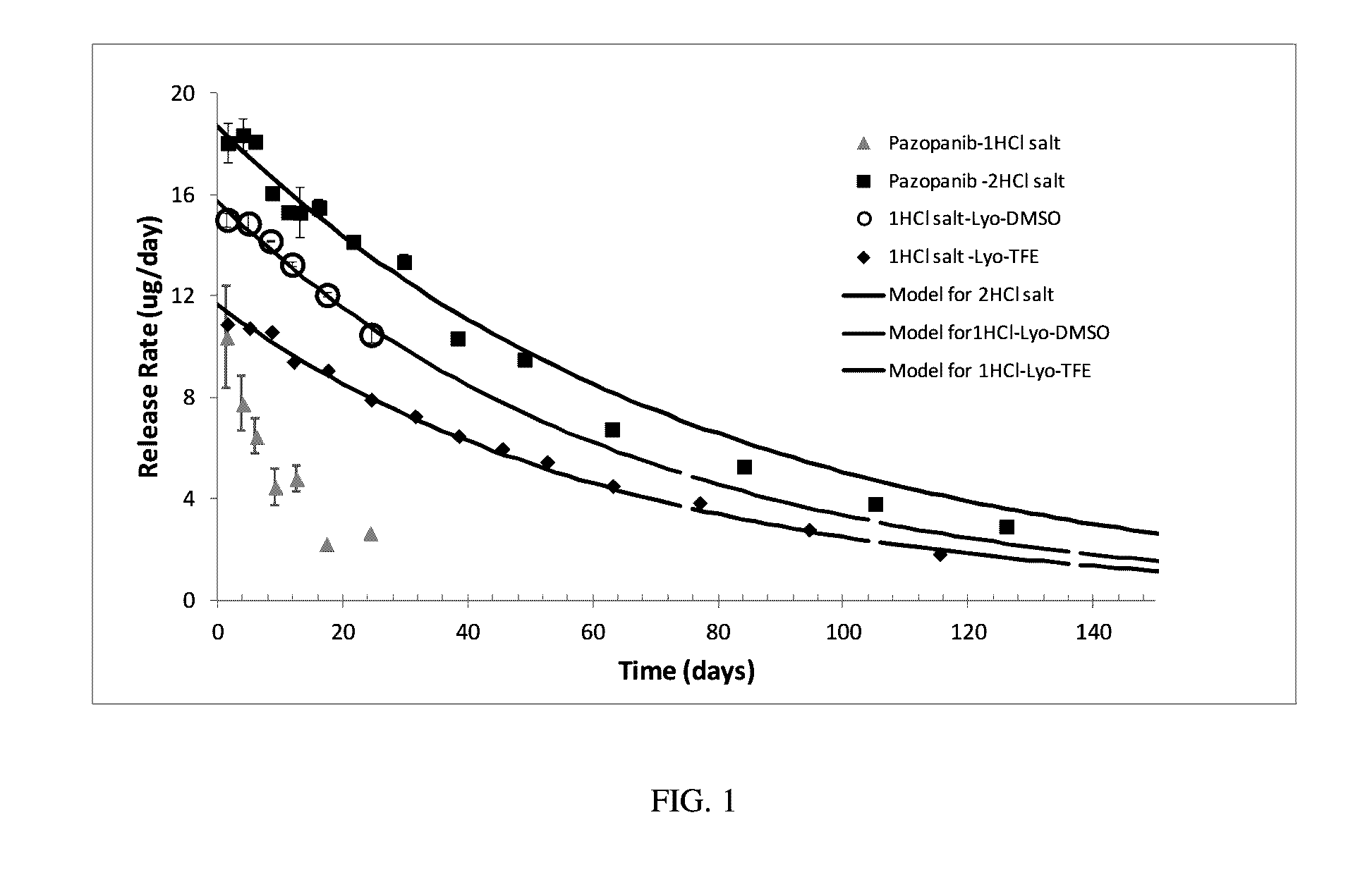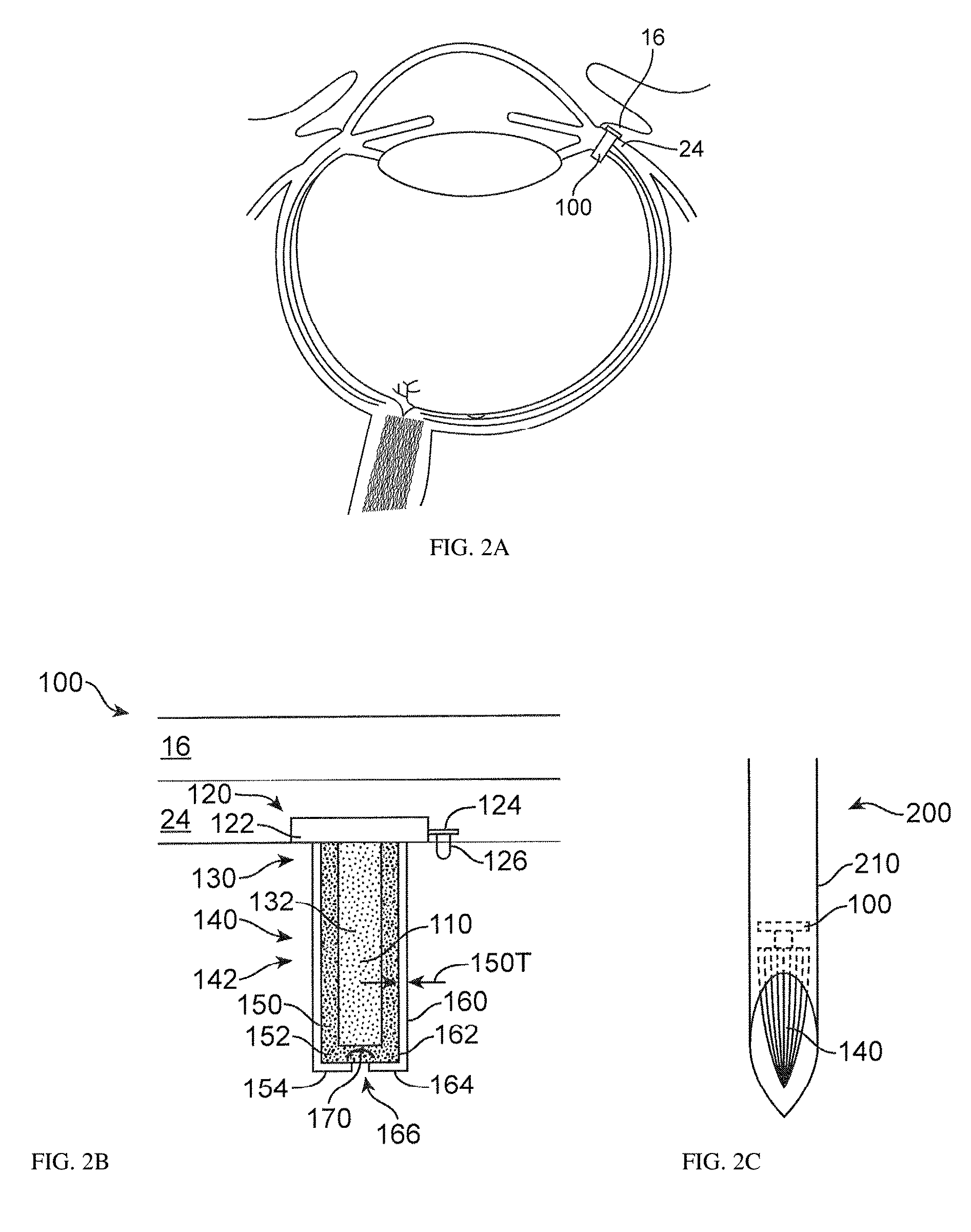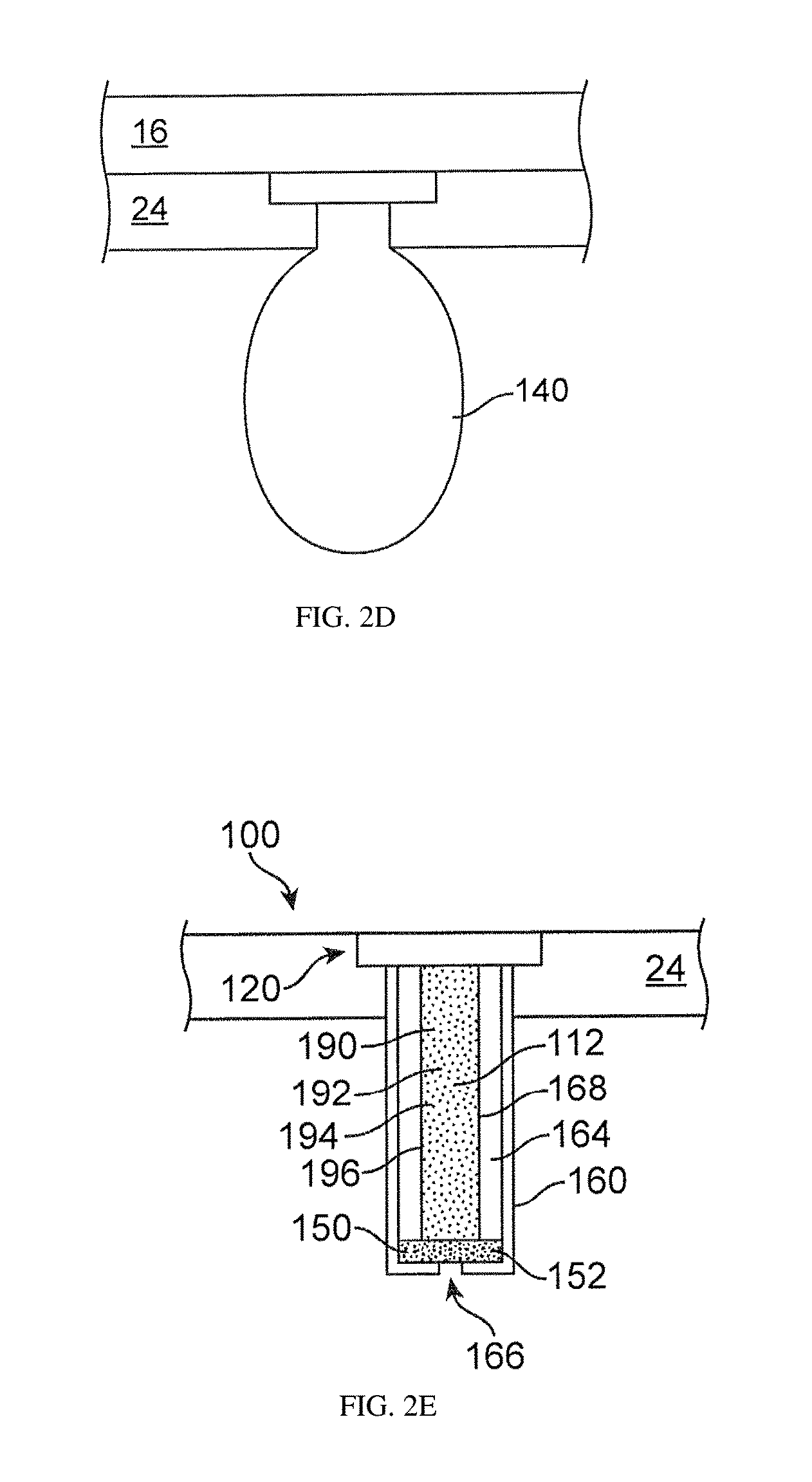Stable and soluble formulations of receptor tyrosine kinase inhibitors, and methods of preparation thereof
a technology of receptor tyrosine kinase and formulation, which is applied in the direction of drug composition, cardiovascular disorder, sense disorder, etc., can solve the problems of repeated intravitreal injections, difficult delivery of therapeutic agents in the eye, and increased stability of monovalent salts in formulations
- Summary
- Abstract
- Description
- Claims
- Application Information
AI Technical Summary
Benefits of technology
Problems solved by technology
Method used
Image
Examples
example 1
Method of Preparation Pazopanib 2HCl Formulation
[0239]The API (from Hwasun Biotechnology Corp.; Distributed by Manus-Aktteva) that contained 2 HCl per each pazopanib molecule was formulated up to 60 mg / ml drug concentrations. Pazopanib dissolved in CAPTISOL® solution and after adding all required excipients the pH was adjusted to the desired values.
[0240]Formulations were prepared by dissolving the required amount of CAPTISOL®, acid, and agents in water. Pazopanib 2HCl was added and mixed until dissolution. Then sodium hydroxide was added to reach the final pH. Formulation was filtered and then injected into PDS implants to perform therapeutic agent release testing.
example 2
Method of Preparation Pazopanib 1HCl Formulation—No Lyophilization
[0241]Approximately half of the required CAPTISOL® in a vial was weighed and dissolved in the appropriate amount of water. PVP-10 k (polyvinyl pyrrolidone, MW=10 kDa) and Histidine HCl were added and dissolved by mixing the solution (vortex, sonication, shaking). Pazopanib API (from Hetero Labs Limited) was weighed and then added to the CAPTISOL® solution. If needed, small amount of hydrochloric acid (HCl) was added to adjust and maintain the pH of the solution at equal to or lower than pH=2. Additives such as triacetin or glycerol were added. The formulation was stirred and shaken at 37° C. or at room temperature until pazopanib was completely dissolved. The dissolution of pazopanib can take several hours. Next, the pH of the pazopanib-CAPTISOL® solution was adjusted to pH 6-7 by adding NaOH or Meglumine Remaining CAPTISOL® was then added and dissolved completely by shaking / vortex the formulation at 37° C. or at room...
example 3
[0242]A high concentration formulation of a therapeutic agent, e.g., pazopanib 1HCl was prepared by stirring and / or shaking the active pharmaceutical ingredient in a dispersion with a base, e.g. NaOH, at room temperature, for about 30 minutes. The composition of the dispersion was, e.g., about 275 mg / mL in 1N NaOH.
[0243]In this method, formulations were prepared by dissolving the required amount of cyclodextrin, acid, and agents in water. The NaOH treated pazopanib 1HCl was added and mixed until dissolution. Then sodium hydroxide was added to reach pH 6-7. Formulation was filtered and then injected into PDS implants to perform therapeutic agent release testing.
[0244]While comparable high drug concentrations were achieved with both the 2HCl and 1HCl Pazopanib forms, the 1HCl Pazopanib formulations were very unstable. The 1HCl pazopanib readily crystallized out both from the formulation on shelf (i.e., during storage) and upon dilution of the formulation (i.e., during drug release).
[0...
PUM
| Property | Measurement | Unit |
|---|---|---|
| concentration | aaaaa | aaaaa |
| concentration | aaaaa | aaaaa |
| temperature | aaaaa | aaaaa |
Abstract
Description
Claims
Application Information
 Login to View More
Login to View More - R&D
- Intellectual Property
- Life Sciences
- Materials
- Tech Scout
- Unparalleled Data Quality
- Higher Quality Content
- 60% Fewer Hallucinations
Browse by: Latest US Patents, China's latest patents, Technical Efficacy Thesaurus, Application Domain, Technology Topic, Popular Technical Reports.
© 2025 PatSnap. All rights reserved.Legal|Privacy policy|Modern Slavery Act Transparency Statement|Sitemap|About US| Contact US: help@patsnap.com



